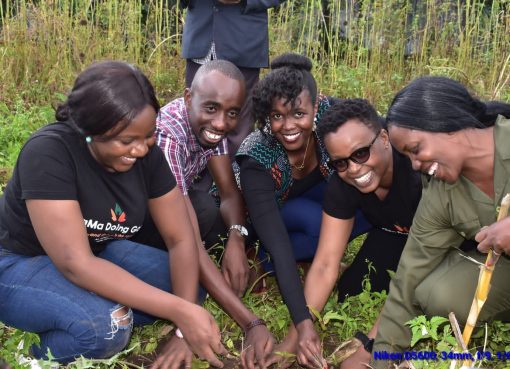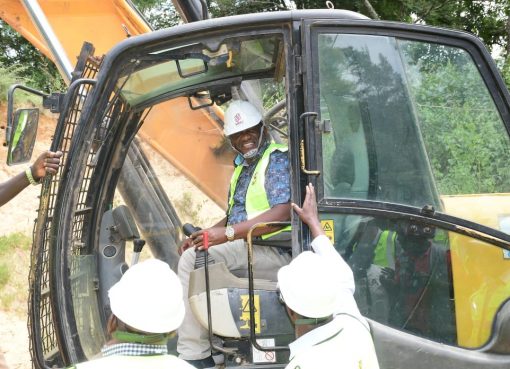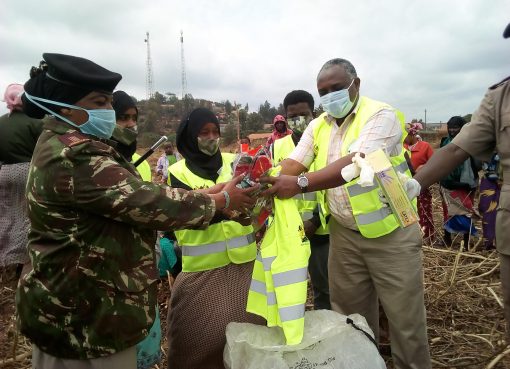It is the desire of every human being to have a clean environment which is habitable and has good ambiance that can entice one to relax, even outside their houses as they socialize with their neighbours and share the day’s activities.
An environment which does not expose people, both children and adults, to disease, especially in this era of Covid-19, a pandemic which Kenyans will have to live with, as they improve their environment, by owing to basic facilities like handwashing water points and pit latrines.
Unlike in the gated communities, slums such as Kabagare in Kiambaa, Kiambu County, people huddle and commune together. They eat and drink from the same cups and even share a plate of Githeri.
People living in this slum are their brother’s keepers and will always follow up what is happening to their neighbours and environment.
When a call of nature knocks on their doors, they do not feel embarrassed, even to queue on the only toilet in the area as they chat their next plan of action in their social economic ventures.
The residents of Kibagare slum, upon seeing what young people in their neighbourhood had embarked on, they eagerly wait for the completion of the pit latrine that was begun in May 2020.
The idea of digging a pit latrine in the slum came up early May when cohorts of the National Hygiene programme (NHP) dubbed Kazi Mtaani were deployed to work on the project.
The 20 youth who comprised 12 females and eight men, would work on the project continuously for a week and were occasionally drawn back by the rains which kept depositing water and silt into the latrine. This pulled them back as they had to first remove the water before they could continue digging it the following day.
Moses Njenga Wanjiru one of the youth on phase one of the NHP welcomed the idea of constructing the toilet in the slum.
He says this is an ambitious project which will help the area residents because the only one available was overstretched and was almost full.
“Every morning we would assemble and embark on digging the pit latrine as others scoop the soil and remove it using buckets” he explained.
Considering that the number of females on the project was more than that of men, they would also participate in the digging and scooping of the soil from the pit latrine.
Angeline Mbithe Ndinda, a member, on her part says the project was a testimony that, what men can do, ladies can also do it even better.
“I was part of those who were scooping the soil from the pit and at the close of the exercise, we had dug about 25 feet” she explained to KNA.
She is optimistic that if they are given another two weeks, they will complete the remaining work on the pit latrine.
Moses Njenga Wanjiru, (member), says the project was a noble one in their midst, adding that it will go a long way to alleviate the suffering of people, especially during the rainy season.
He confesses that the only existing toilet in the area is not adequate for the over 500 residents.
Kiambaa Deputy County Commissioner, Mr. Peter Maina, says after seeing that the digging of the pit latrine was going an extra mile in providing residents with an extremely important amenity, they were elated with the project and are anxious for it to get finished.
Maina noted that the resident are very supportive and are happy that they will have added more latrines in the area that has only one for the male and one for females
“After consultation with the slum dwellers, it was agreed that a pit latrine and soak pit be done, said Mr. Maina. He, however, clarified that area Member of County Assembly (MCA) had agreed to support the construction of the slab of the pit latrine.
In phase two2 of the programme which begun on Wednesday last week, some skilled casual workers have been taken on board and are currently being used to complete the project which will benefit about 500 people who are currently living the informal settlement that is oftenly affected by the rains during the rainy season.
Kiambu County Commissioner, Mr. Wilson Wanyanga, said yesterday that designs for Kibagare pit latrine were in the process, adding that the move will help engage the cohorts for something that will be a legacy for the programme.
“Youth will participate in the making of bricks for construction of the pit latrine,” he stressed.
“Under phase two, Principal Secretary Housing, will sign an agreement (MOU) with County Governments. The role of this program will be to provide labor while counties provide materials, especially in areas of skilled labour, noted Mr. Wanyanga
The Director of Housing in Kiambu County, Mr. Michael Kiarie, told the meeting that set the ball rolling for the phase two of “Kazi Mtaani” programme, that the second phase of the program, was sponsored by the government of Kenya, while the first phase had been sponsored by the World Bank.
Four Sub-counties of Kabete, Kikuyu, Kiambaa and Thika benefitted from phase one of the NHP which deployed 2,300 youths on the programme during piloting.
Phase two of the programme has taken on board 23,881 youth from the entire 12 sub-counties of Kiambu County.
In the programme, the cohorts work within their homes and are paid 600 shillings per day from Monday to Friday. The money is paid on-line through their M-Pesa accounts on a weekly basis.
The program was begun by, President Uhuru Kenyatta, on April 27 with an intention of cushioning the youth against Covid – 19, which rendered scores of youth jobless, following the closure of many institutions, including transport and hospitality and big and small businesses countrywide.
By Lydia Shiloya





